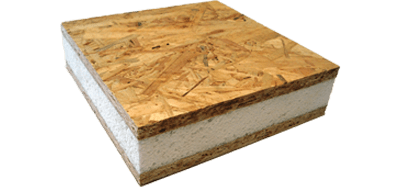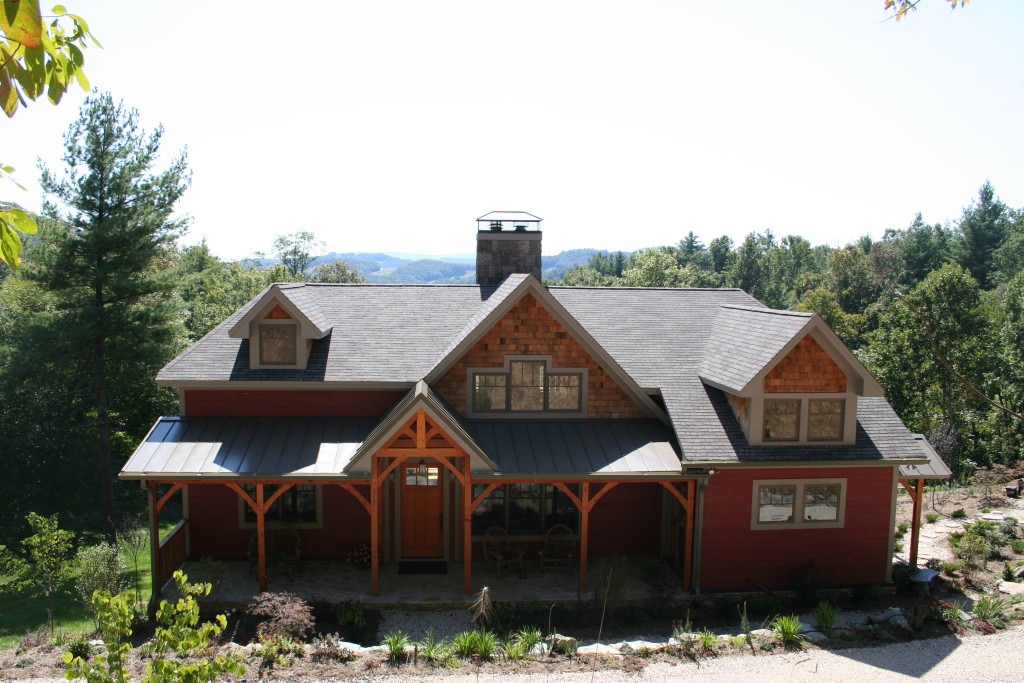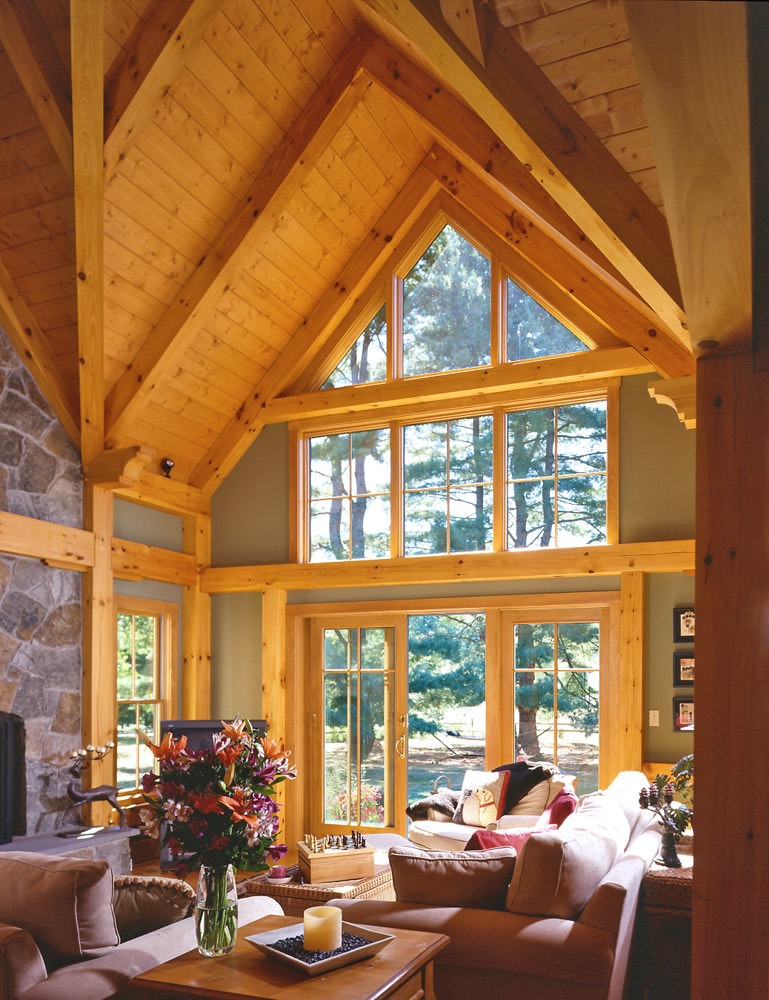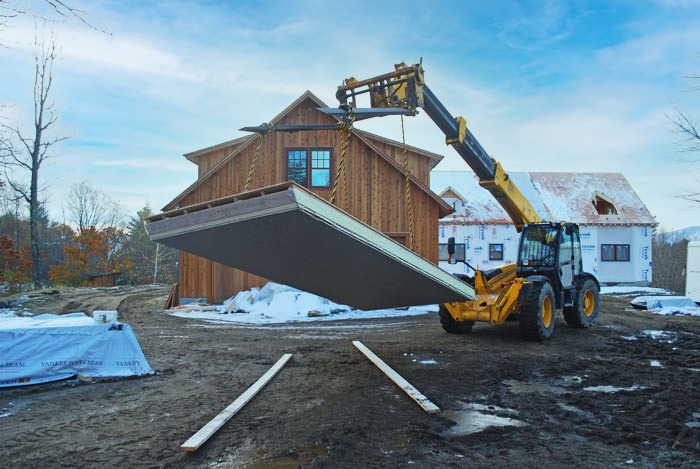Last week, we highlighted all of the many materials that go into the Timberpeg Package. One of the big choices that a homeowner has to make when spec-ing out their package is deciding on a roof assembly. The two systems we use for the roof assembly are a structural insulated panel (SIP) system or our Wrap & Strap system. While each is an excellent choice for a great roof, we thought a post comparing the two would help you understand the difference between the two. We have talked about SIPs many times before, but usually have concentrated on wall panels. Like SIP wall panels, SIP roof panels consist of a layer of insulation sandwiched between two oriented strand boards (OSB). Although the interior board can be a gypsum wall board (drywall) and some builders use this for walls, we prefer that the panel have OSB on both sides and that the interior finish is attached to the OSB.

The SIP panel can use a few different types of insulation, with expanded polystyrene (EPS) being the most common. EPS is the lowest cost for a given R-value, but it only provides about R-3.8 per inch of thickness. This means if you want an R-38 roof (a common value in the Northeast) you would need a 10-inch-thick panel. If this thickness is a concern, extruded polystyrene (XPS), with about R-5 per inch can be used with similar structural properties. Both types of SIPs come in assemblies that are 4 or 8 feet wide and up to 24 feet long. In contrast, the Wrap & Strap system uses polyisocyanurate (PIR) foam insulation. This type of insulation offers R-6 per inch and thus an even thinner roof is possible for a given R-value. While PIR could be used in SIPs on a timber frame home, it is not typically manufactured since it is not structurally suitable for other types of homes.

When deciding which roof assembly is right for you, the main trade-off is time versus expense. Typically, a SIP roof will be slightly more expensive than the Wrap & Strap method. However, if labor rates for builders in your area are higher than average the overall price may be more equal, since the SIP system requires much less job site labor. The lower labor required means that a SIP roof goes up much faster than the Wrap & Strap approach, which may be desirable if local weather conditions or your build schedule means your home needs to be closed in quickly.

Once constructed, the performance of each roof system is similar. Each have strapping between the roof deck and insulation to promote a cool, dry roof. The Wrap & Strap approach uses continuous vapor barriers and insulation installed on site, which makes for a tight home envelope. The SIPs need to be sealed at their joints when assembled but tend to have higher overall R-values. Either approach will yield a well-insulated and stable roof system. We hope this comparison of the SIP and Wrap & Strap roof systems has been helpful. Of course, if you wish to discuss this or any other aspect of timber frame home building, feel free to contact us anytime.

